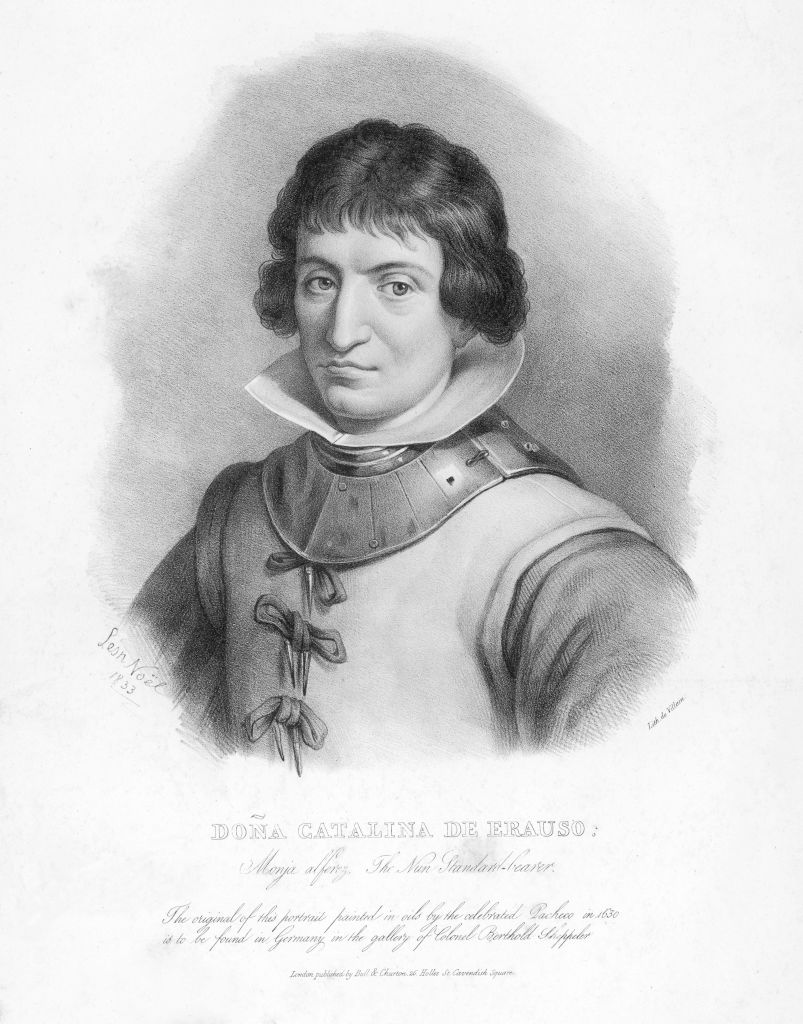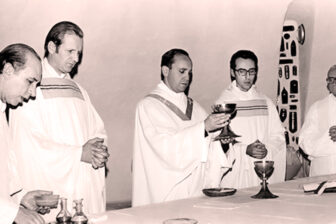This article is adapted from AQ’s special report on Guatemala.
When you google Antonio de Erauso, the little biographical box at the top of the search page sums him up in one word: “Nun.” That semi-contradiction suggests an intriguing life—but the reality is more fascinating still.
The Lieutenant Nun—as Erauso was widely known in the 17th century—was born in 1592, as Catalina de Erauso. Raised in a convent as a novitiate, Erauso escaped at the age of 15. Fashioning himself men’s clothes, Erauso spent most of the rest of his days under a variety of assumed masculine names, of which Antonio was the most consistent, and similar to his birth name. His life was a swashbuckling conquistador picaresque, featuring sword fights, jail, claiming asylum in churches, soldiering, scrivening, duels, jealous husbands of the women he reportedly seduced, and three transatlantic voyages.
It sounds like the stuff of fiction—and now, it is. While Antonio de Erauso was a real person, the novel We Are Green and Trembling is Argentine author Gabriela Cabezón Cámara’s fictionalized retelling of the mysterious last days of the life of the Lieutenant Nun.

We Are Green and Trembling
Gabriela Cabezón Cámara
Translated by Robin Myers
New Directions
222 pages
The novel begins after Antonio has escaped a Spanish barracks with two young, malnourished Guaraní girls he has rescued, along with two monkeys, a dog, a mare and her foal. They live in a kind of half-starved Edenic paradise, surviving on mare’s milk and the fruit the monkeys bring them. In a letter he writes to his aunt, the prioress of the convent in which he was raised, Antonio records his confession—including all the men he’s killed.
Constantly interrupted by one of his small Guaraní companions, Antonio tells her the Christian story of creation, while she explains to him the Guaraní version of the same. In flashbacks, we hear about his escape, an ongoing search, and growing resistance by Indigenous people in the area. The text features snatches of Guaraní, Basque and Latin—and the Spanish has been beautifully translated by Robin Myers to echo the feeling of a panoply of voices and speakers in this polyphonic New World.

Erauso was a celebrity in his own time—meeting the pope and the Spanish king, and writing (or dictating) an apparently widely read autobiography. However, the years after he returned to New Spain remain shrouded in mystery. The circumstances of his death are the subject of significant scholarly debate. This book offers one answer—giving Erauso a found family, inducting him into the mysteries of the jungle, and making him a decidedly maternal figure to the two girls he has rescued.
In real life, Erauso’s popular moniker, “The Lieutenant Nun,” refers to the fact that he was made a lieutenant during a war between the Spanish and the Mapuche in modern-day Chile. But he did not receive further promotions due to numerous complaints of his cruelty against the Indigenous. One can only imagine the levels of brutality required to ruin a career in the Spanish colonial military.
While Cabezón Cámara portrays in vivid detail the violence inherent in the colonial project, she keeps her hero mostly away from it, his murders only recollections, his attitude to his Indigenous wards patient, before he eventually melts into the jungle with them after the defeat of the Spanish soldiers. The jungle is presented as a space for possibility and transformation, but also one where the past is wiped clean, unaccounted for and blank.












